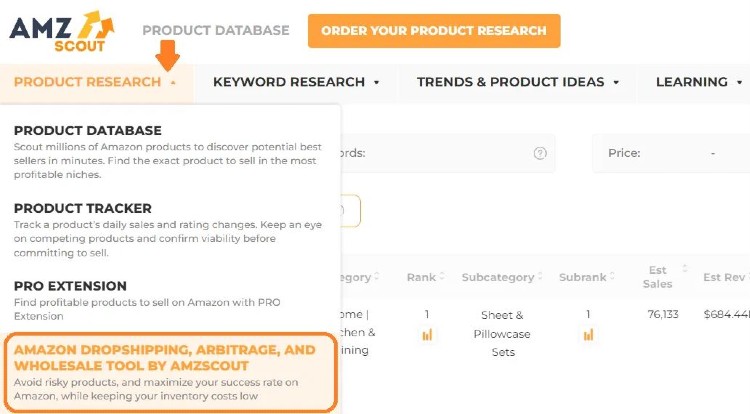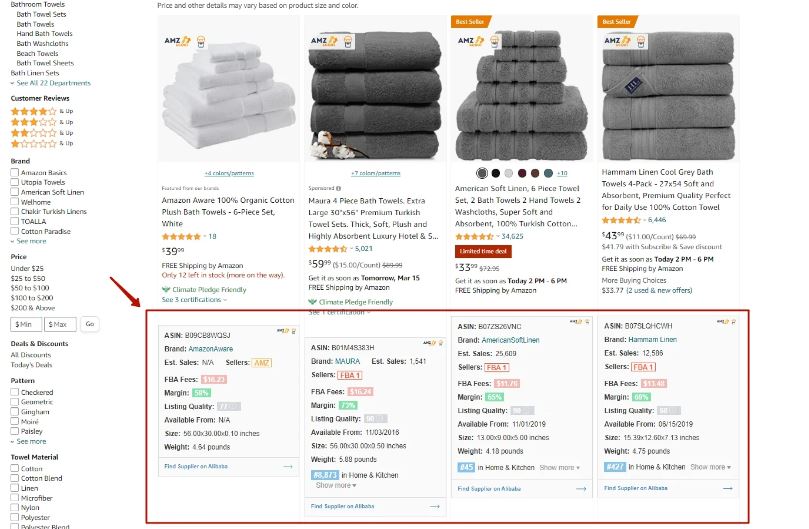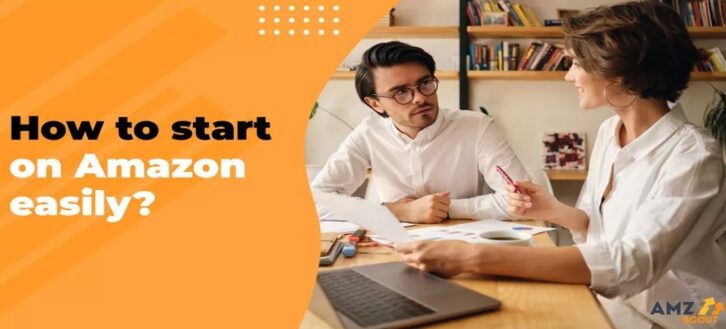Amazon arbitrage is a business model that involves purchasing items from other retailers or online marketplaces, such as Walmart or eBay, and then reselling them on Amazon for a higher price. This strategy can be lucrative if done correctly and can be a great way to start a side business or supplement your income. Whether you are new to e-commerce or a seasoned pro, this article will provide you with all the information you need to get started with Amazon arbitrage and start making money today!
How to Find Products for Arbitrage
Here is a step-by-step guide to getting started with Amazon Arbitrage:
- Research: Research and identify products selling well on Amazon, with high-profit margins and low competition. You can use Amazon’s Best Seller list, Amazon’s categories, or online tools such as Jungle Scout to find these products.
- Sourcing: Find a reliable supplier that offers the product you are interested in at a lower price. You can use online marketplaces such as Alibaba, or visit local retailers to find the product you need.
- Create an Amazon seller account: If you don’t already have one, create an Amazon seller account. This will allow you to list your products for sale on Amazon.
- Listing creation: Create a listing for the product on Amazon. Be sure to include high-quality images, a detailed product description, and competitive pricing.
- Purchase and shipment: Purchase the product from your supplier and arrange for it to be shipped to Amazon’s fulfillment center.
- Monitoring and optimization: Monitor your product’s sales and adjust your pricing and marketing strategies as needed to maximize profits.
- Repeat: Repeat the process with other products to build a profitable and scalable Amazon arbitrage business.
It is important to remember that Amazon Arbitrage requires a significant investment in both time and money. You must also be aware of Amazon’s policies and regulations to ensure that your business remains compliant.
How to Find Products for Arbitrage
Selling with Amazon arbitrage can be a lucrative business, but only if you know how to do proper product research. To be successful in this venture, you need to find products that are in demand and can actually sell, so you don’t end up with a backlog of slow-moving inventory.
Using the AMZScout Online Arbitrage & Dropshipping Tool for Sourcing Products
The AMZScout Online Arbitrage & Dropshipping tool is an invaluable resource used for product sourcing for amazon. With its user-friendly interface, you can quickly find products that are popular and have high demand. Here’s a simple guide to its usage:
Step 1: Download the AMZScout Online Arbitrage & Dropshipping Extension
The very first step to finding profitable products is to download the AMZScout Online Arbitrage & Dropshipping software. This tool will help you quickly find products that people are interested in buying.


Step 2: Start Your Free Trial
You can start your free trial by simply providing basic information. No payment details are required.
Step 3: Find Product Ideas on Amazon
Go to Amazon.com and look at different product categories or niches that interest you. You can also find products in demand on other marketplaces or websites. The search results will show you boxes with extra information about each product that will help you find the best-performing items.


Step 4: Identify the Most Profitable Products
Once you have the AMZScout extension installed, you’ll see a built-in panel on each Amazon product page. Use this information window to determine if the product is private-label, ungated, or hazmat. This will help you determine the product’s profitability.
Step 5: Calculate the Product’s Potential Profit
Enter your target sales price in the calculator to predict the profit margins. This information will help you determine whether the product is worth selling.
Streamlining Your Product List with the AMZScout PRO Extension
The AMZScout PRO Extension is one such tool that can help you identify products that match your criteria and help you assess their competition and profitability.
Step 1: Download the AMZScout PRO Extension
The first step to using the AMZScout PRO Extension is to download it. You can easily find the extension on the AMZScout website and download it to your browser.
Step 2: Start the Extension
Amazon.com will automatically open once the extension is active, and you will see a message indicating that the extension is ready to use. If you haven’t registered yet, you can start a free trial by providing some basic information. Don’t worry, there’s no need to provide payment information to start the trial.
Step 3: Find Your Products
Next, you need to find the products you want to assess. If you have used AMZScout’s Online Arbitrage and Dropshipping Extension, you can go to the products you found and load the results.
Step 4: Use the AMZScout PRO Extension
Once the results load, click on the AMZScout icon in the lower-left corner of your browser to open the extension. The extension will show you detailed information on the competition and profitability of each product, making it easier for you to narrow down your product list.


Evaluate Product Information
Before you dive into reselling any of the products, it’s important to take a closer look at its information to ensure it is going to be a profitable choice. Here are some of the main factors to consider:
- Number of Sellers – The number of sellers for a product is a crucial factor to keep in mind. If there are more than 20 sellers, the competition is high, and profits may be limited. On the other hand, 2 to 20 sellers indicate that the product is well suited for arbitrage. If there is only one seller, it’s unlikely that the product is available for resale.
- Net Margins – Net margins over 50% are a good indicator that a product will be profitable. These products have a higher chance of generating profits.
- Date Available From – The date a product was first available on Amazon can provide insight into its demand and competition. This information can help you assess the potential for profits.
- Additional Considerations – There are many other factors to consider when evaluating a product, including product weight, shipping costs, and more. It’s essential to take a thorough look at all available information to make the best decision.
- Assess the Product Score
The Product Score is an essential tool that considers demand, competition, and margins to determine how easy it will be to sell a product. For the best chances of success, look for products with a Product Score over 7.
Analyze Sales Performance
To get a better understanding of a product’s potential for profitability, it’s essential to review its sales history. By clicking on the row for a particular product, you’ll find the link to its Product History. Here, you can see how prices and sales have trended over time, providing valuable insights into the product’s potential for profits.
By considering the competition levels and restrictions, you can maximize your profits and minimize the risk of your offers being buried by others. Here are some important factors to consider before sourcing a product.
Check Competition Levels
Before sourcing a product, it’s important to assess the competition levels. Look at other sellers of the same product and compare their prices, ratings, and reviews. This will give you an idea of the market saturation and what kind of competition you’re up against. If there are too many other sellers for a product, it can be difficult to gain the coveted buy box and get your offer in front of shoppers.
Avoid Products with Amazon Sellers
Another factor to consider is whether Amazon itself sells the product. If the product is being sold by Amazon, it’s best to avoid it. Amazon tends to give themselves the buy box, making it challenging for other sellers to get noticed.
Choose an Ungated Category
Amazon has two types of categories: gated and ungated. Gated categories require approval from Amazon, for example, jewelry, art, watches, DVD, and collectibles. Restricted categories can be difficult for arbitrage because the approval process can be time-consuming, and opportunities may come and go while you’re waiting to be ungated. It’s best to choose an ungated category to take advantage of arbitrage opportunities as they arise.
How to Source Products for Arbitrage
Before sourcing products, it’s essential to calculate the cost of sourcing products, including all the associated costs that come with selling on Amazon. This includes the referral fee charged by Amazon on each sale, shipping costs, and the cost of fulfilling orders. To maximize profits, you need to find products that can be sourced for a lower price than the Amazon floor price.
So what is the best place to find arbitrage products for amazon? Let’s examine the different places you can go to source products for Amazon arbitrage.
Online Marketplaces
Online marketplaces are a convenient option for finding products for Amazon Arbitrage. You can easily browse through different online markets from the comfort of your home and compare prices with those on Amazon. Global marketplaces like eBay, Walmart, AliExpress, and Alibaba are some of the top places to find products for Amazon Arbitrage.
- eBay
eBay features a vast array of products from different categories, and the marketplace is highly competitive due to the presence of many third-party sellers. This competition leads to lower prices, making eBay a great place to find products for Amazon Arbitrage.
- Walmart
Walmart’s online marketplace has grown into one of the largest in the world since adding support for third-party sellers. You can find products from a wide range of categories, and there are flexible fulfillment options, including in-store pick-up.
- AliExpress and Alibaba
AliExpress is a popular marketplace for consumers, while Alibaba is geared towards B2B buyers and bulk purchases. While both marketplaces are effective for finding arbitrage products, keep in mind that delivery times from these markets can be longer as many of the products ship from China.
- Physical Retail Stores
Physical retail stores are another option for finding products for Amazon Arbitrage. While retail arbitrage offers a limited selection of products compared to online marketplaces, it’s still a viable option for those who prefer to source products in person. Some of the top retail stores for finding products to resell on Amazon include shopping malls, dollar stores, Kohls’s, Marshalls, Home Depot, Lowes, and Staples.
How to Sell Amazon Arbitrage Products
Selling on Amazon can be a lucrative business, and with the right approach, you can increase your profits even more through Amazon arbitrage. Here’s a comprehensive guide to help you get started and sell successfully on the platform.
Listing Your Products
To get your products listed on Amazon, you need to use the ASIN (Amazon Standard Identification Number) of the current listing. Here’s how to do it:
- Locate the product listing you want to sell.
- Scroll down and copy the ASIN.
- Open your Seller Central account, go to Inventory, and select Add a product.
- Paste the ASIN in the search field, and the product will be pulled up. Click “Sell this product” to continue the listing process.
Note: You can also use the Amazon Seller app to list your products by scanning the barcode.
Setting the Right Price
Your pricing strategy plays a crucial role in determining the success of your Amazon arbitrage business. To win the buy box and maximize your chances of converting customers, Amazon prioritizes the lowest-priced option. However, it’s essential to set a price that still provides high enough margins for your sales.
Fulfillment Options
In addition to creating product listings, you also need to decide how you’ll fulfill your orders. You have three options:
- Fulfilled by Amazon (FBA): Amazon handles order fulfillment for you.
- Self-fulfillment: You handle order fulfillment yourself.
- Dropshipping: You ship products directly from the source.
If you choose to dropship, make sure to familiarize yourself with Amazon’s dropshipping policy to avoid any issues.
Driving Traffic to Your Listings
Once your products are live, you need to drive traffic to your listings to start seeing sales. If you’ve researched a product with manageable competition, you should be able to gain the buy box organically over time. To increase visitors, consider running an Amazon advertising campaign.
By following these steps, you’ll be well on your way to selling successful Amazon arbitrage products and maximizing your profits.
Tips for Amazon Arbitrage
Simply buying low and selling high is not enough to guarantee success in this competitive market. Here are some tips to help you get ahead in the world of Amazon arbitrage.
Choose Products Wisely
Selecting the right products to sell on Amazon is crucial to your success as an arbitrage seller. Consider products with high demand and low competition. Look for items that are trending or have growing demand, but also make sure to choose products that are unique and have high-profit margins.
Price to Win
Pricing your products competitively is essential to attracting customers and making sales on Amazon. Be mindful of your competitors’ prices and make sure to set your prices a little lower to give customers a reason to choose your product over theirs. Don’t forget to factor in the cost of your products and shipping when determining your final price.
Maintain an Adequate Stock
Running out of stock is a common problem for arbitrage sellers, and it can be a major setback for your business. To avoid this, make sure to keep an adequate stock of the products you’re selling. Consider using a software solution to help you keep track of your inventory levels and ensure that you always have enough products on hand to meet demand.
Arbitrage, as a selling method, has its share of advantages and disadvantages. Understanding these can help you make an informed decision on whether this approach is right for you. Let’s take a closer look at the key pros and cons of the arbitrage method.
Pros of Arbitrage
- In-Demand Products: One of the biggest advantages of the arbitrage method is that you can sell products that are in high demand. This increases your chances of making sales and generating a profit.
- Easy to List Products: With the arbitrage method, listing products is a breeze. You can list products quickly and easily, making it possible to start selling right away.
- Low Startup Investment: Another advantage of arbitrage is the low startup investment required. You don’t need a lot of money to get started, making it accessible to almost anyone.
- Low Risk: Arbitrage is a low-risk method of selling products. Since you’re not holding onto inventory, you don’t have to worry about losses from unsold products.
Cons of Arbitrage
- Low Margins: One of the biggest drawbacks of the arbitrage method is that margins can be low. You’ll need to sell a large volume of products to make a significant profit.
- Hard to Scale: Another disadvantage of the arbitrage method is that it can be difficult to scale. As you sell more products, your profits will increase, but it can be challenging to keep up with the demand.
- Lack of Control Over Product: With the arbitrage method, you don’t have complete control over the product. This can be problematic if there are issues with the product, and you’re unable to resolve them.
Conclusion
In conclusion, the arbitrage method of selling products has its advantages and disadvantages. Understanding these can help you make an informed decision on whether this approach is right for you. Whether you’re a seasoned seller or just starting, the key is to weigh the pros and cons and decide what’s best for you and your business.




